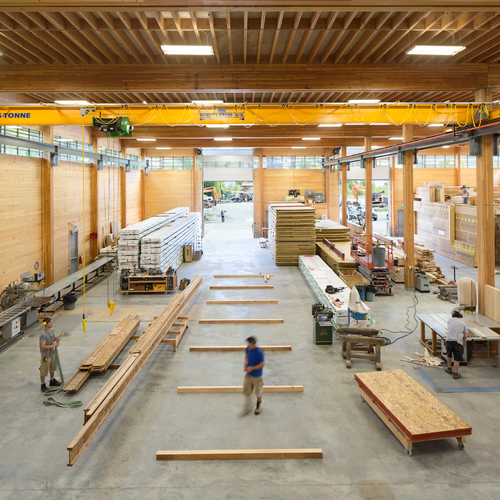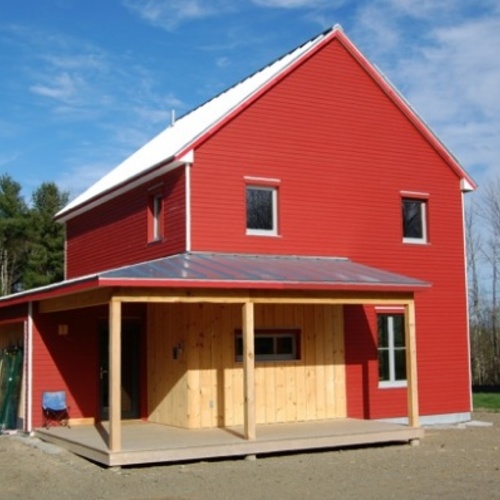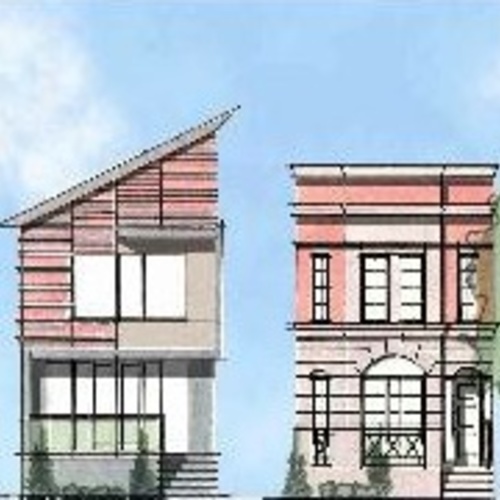
Image Credit: Healthy Buildings Technology Group
Image Credit: Healthy Buildings Technology Group The OHome Wave features 12-ft. ceilings and a 20-by-40-ft. floor plan, with overhangs of 4 to 6 ft. The OHome Classic is presented as contemporary take on traditional gable design. Healthy Buildings Technology Group says the OHome Wing – which features 12-ft. ceilings, large overhangs, and access to an optional roof garden – is relatively easy to ship and is ideally suited for temperate climates. Healthy Buildings Technology Group says OHomes will be available in sizes ranging from 640 to 1,500 sq. ft.
In spite of strong headwinds in the housing market, manufacturers are coming up with new homes featuring factory-built panels, modules, or roof assemblies. One of the newcomers in the factory-built realm is Healthy Buildings Technology Group, an offshoot of Healthy Buildings USA.
The company was launched in Napa, California, in 1999 by Bob Massaro, whose interest in green building has found expression in Bay Area projects such as the LEED-certified Vineyard Lodge dormitory for the Culinary Institute of America at Greystone. Massaro also was recently president of the U.S. Green Building Council’s Redwood Empire Chapter.
Funded by a number of local investment groups, Healthy Buildings Technology Group is developing prototypes for a factory-built home series called OHome – a name intended to play on the design advantages of the sphere, which, the company says, “provides the least surface to the greatest interior area, which is at once structural but also thermally optimum.” The series consists of three models, each with a contemporary design – the Wave, which features a curved, vaulted roof; the Wing, whose flat roof angles up toward the front of the house and can accommodate a roof garden; and the Classic, with a gabled roof.
Nearing the house-as-commodity concept
As noted in a North Bay Business Journal story published January 31 – the day Healthy Buildings Technology Group announced its launch – the homes in the OHome line are designed for assembly in less than three weeks, and the size range will be 640 to 1,500 sq. ft. The first two demonstration homes, to be built this year in Napa, will be 1,200 sq. ft. and 640 sq. ft., with the former structure presented as a main house and the latter as a second unit, the Business Journal says.
Once the necessary site work and assembly are completed, each OHome will be in move-in condition, with all finishes, fixtures, and appliances in place and ready for use. The company calls its product a super-energy-efficient, compact “house-in-a-box” designed to perform as a “net zero electric” dwelling. Depending on location and buyer preference, the thermal resistance of the home’s exterior walls can be upgraded from R-30 to as much as R-60. The per-square-foot cost, meanwhile, starts at $250, which puts the basic OHome line in the $160,000-$375,000 price range, excluding land costs.
Land costs can easily top all other costs if you’re building in the Bay Area, although Malcolm Davies, co-founder of Healthy Buildings Technology Group and its executive vice president, tells GBA that while the company’s current plan is to serve clients in Northern California initially, it plans to expand to the entire West Coast by the end of 2011 and all of North America in 2012. International interest is expected to pick up this year.
Davies added that the company is now focused on standardizing, as much as possible, the design, manufacturing, and assembly process. “We are viewing a home as a ‘Product’ rather than a traditional building,” he says. “And we are investing a lot more time and energy into the design and construction process, including prototyping physical components, than is possible with a traditional building.”
Weekly Newsletter
Get building science and energy efficiency advice, plus special offers, in your inbox.















0 Comments
Log in or create an account to post a comment.
Sign up Log in